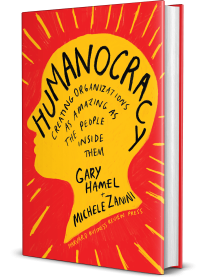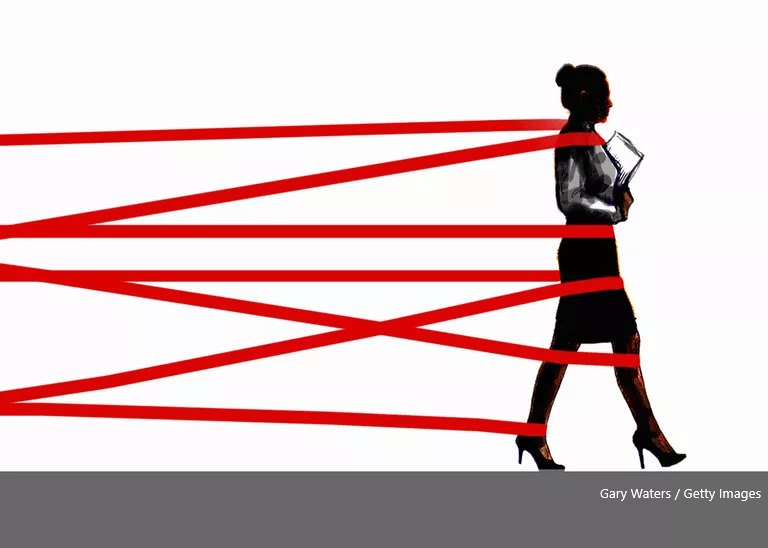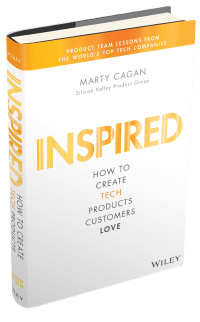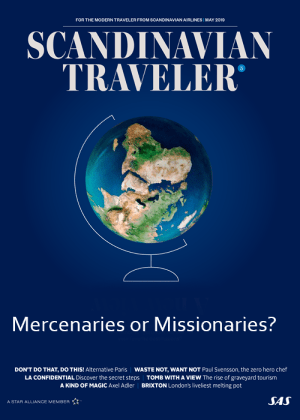Two craftsmen are working on a cathedral, each having their own toolbox. During the coffee break they have a heated debate on which toolbox is best. Why not discuss the bigger issue – the cathedral? Because the toolbox is easy to understand.
On LinkedIn and other media you’ll find the same type of toolbox/framework discussion over and over again.
What would be much more interesting is to learn about the cathedral and the real challenges. Only when understanding the strategic context does it become interesting to learn about the thinking and rationale behind the choice and implementation of toolboxes/frameworks.
This post will elaborate on the question of how to manage today’s complexity in a sustainable way – and yes – missionaries are part of the answer.
The toolbox/framework discussion will continue because it is easy. The day after tomorrow a new Silver Bullet will see the light of day: “The Half-Triple” toolbox/framework. You better start a Transformation program as of now – your competitors read about it yesterday in a magazine on a domestic flight.
 This is an easy sell to the busy CEO already struggling with the last major and far from finished transformation. Just sign on the dotted line and we’ll make miracles happen in your organization … this time.
This is an easy sell to the busy CEO already struggling with the last major and far from finished transformation. Just sign on the dotted line and we’ll make miracles happen in your organization … this time.
For those of you old enough to remember it, back in the past millennium we had an industry selling the wet dream of nearly automated software development. It was called CASE – Computer Aided Software Engineering. The same thing: a promise to have complex problems, or wicked problems if you will, go away – just sign on the dotted line.
In a hurry? Jump directly to the wrap-up.
Complexity is here to stay
What has made FAANG (Facebook, Amazon, Apple, Netflix, and Google) … and Tesla, and SpaceX successful is not their choice of toolbox/framework. In fact you’ll not hear much talk about e.g., “Agile” in these companies. Variations of Agile toolboxes / frameworks is part of their basic toolbox, just like being competent writing code in C#. As described earlier, they are focused on their Product Culture which is much more than some toolbox/framework. You’ll find (highly competent) missionaries here working for a bigger cause – not just mercenaries being told what to do.
Steve Jobs
Rather than fixating on some tools/frameworks, I recommend reflecting on the question
“how can we build a company culture filled with missionaries?”
Your answer to that question is what really addresses complexity in your organization.
From mercenaries to missionaries
 This is a very big and hard topic highly dependent on your specific business context. What differentiates a mercenary from a missionary? What is the difference between bureaucracy and humanocracy? What are the traits of a “Product Culture”? How can we obtain sustainable changes?
This is a very big and hard topic highly dependent on your specific business context. What differentiates a mercenary from a missionary? What is the difference between bureaucracy and humanocracy? What are the traits of a “Product Culture”? How can we obtain sustainable changes?
Here I’ll limit the input to recommending and commenting on some worthy-to-read books, proving bricks to the missionary puzzle.
Humanocracy
 Gary Hamel’s book Humanocracy takes the bureaucracy under the microscope contrasting it to what he describes as humanocracy. Here are some touch-downs from his book:
Gary Hamel’s book Humanocracy takes the bureaucracy under the microscope contrasting it to what he describes as humanocracy. Here are some touch-downs from his book:
- [page 8] Hamel contradicts the statement “The lack of adaptability is due to the human nature – people are against change” with “We as humans are change addics with an insatiable appetite for the new. Unlike human beings, organizations are pretty much crap at change”.
- [page 16] on what drives engagement: “Purpose, autonomy, collegiality, and the opportunity to grow”.
- [page 20] on bureaucracy vs humanocracy: “In a bureaucracy human beings are instruments, employed by an organization to create products and services. In a humanocracy, the organization is the instrument – it’s the vehicle human beings use to better their lives and the lives of those they serve”
- [page 262] on leadership: “Leadership is not defined by the exercise of power but by the capacity to increase the sense of power among those led. If you’re a manager of any sort, you can’t empower others without surrendering some of your own positional authority”
- [page 265] on hacking management: “Ultimately you have to change the core processes by which your company is run – planning, resource allocation, project management, product development, performance assessment, promotion, compensation, hiring, training, and all the rest. Each of these processes must be rebuilt atop the principles of humanocracy”
- [page 289] on rethinking leadership: “Competence in the Leadership tasks that really matter – spotting opportunities, energizing colleagues, challenging vested interests, reimagining business models, and nurturing others – doesn’t correlate with hierarchy and receives little or no attention in most leadership programs”
- [page 290] on rethinking change: “The traditional change model is wholly inadequate. Most change programs still confirm to Kurt Lewin’s seventy-year-old, three-stage change model, unfreeze – change – freeze”
- [page 292] on rethinking change: “Senior management must embrace the complexity of systemic change while resisting the urge to fabricate exhaustive and highly prescriptive change programs”

Should you need an eye-opener, try Hamel’s Bureaucracy Mass Index tool with ten questions across these seven categories of bureaucratic drag:
- Waste – number of organizational layers and time spent on low-value bureaucratic tasks
- Friction – bureaucratic impediments to speedy decision making
- Insularity – percentage of time devoted to internal versus external issues
- Autocracy – limits to frontline autonomy
- Conformity – likelihood that unconventional ideas are greeted with skepticism or hostility
- Timidity – constraints on experimentation and risk taking
- Politicking – the prevalence of political behaviors and the role they play in determining personal advancemant
INSIPRED
 In INSPIRED, Marty Cagen provides a unique insight into how the best Product Teams have become the best. (Also) this book is filled with insights making it hard to select passages, but I’ll give it a try:
In INSPIRED, Marty Cagen provides a unique insight into how the best Product Teams have become the best. (Also) this book is filled with insights making it hard to select passages, but I’ll give it a try:
- [page 23] on getting beyond Lean and Agile: “People are always searching for a silver bullet to create products, and there is always a willing industry – ready to and willing to serve with books, coaching, training, and consulting. But there is no silver bullet. As I write this, it’s in vogue to criticize both Lean and Agile.”
- [page 34] on strong product teams: “With reference to John Doerr, we need teams of missionaries, not teams of mercenaries. Mercenaries build whatever they’re told to build. Missionaries are true believers in the vision and committed to solving problems for their customers.”
- [page 39] on strong product teams: “If your company is not yet set up around dedicated product teams, this is probably the most important thing for you to fix. Everything else depends on it.”
- [page 40] on strong product teams: “I have found over the years that while techniques change fairly constantly, the underlying principles endure”
- [page 163] on product discovery: “If you want to discover great products, it really is essential that you get your ideas in front of real users and customers early and often. If you want to deliver great products, you want to use the best practices for engineering and try not to override the engineers’ concerns.”
- [page 178] on discovery framing: “Fall in love with the problem, not the solution.”
- [page 286] on transformation techniques: “People are people. As a very explicit example, moving from a mercenary-style, product roadmap-driven, output-focused teams, to truly empowered, accountable product teams that are measured by business results, represents a major cultural shift and a substantial handoff of power and control from management to the individuals in the teams.”
- [page 289] on transformation techniques: “Many problems arise because the vast majority of these Agile coaches don’t have experience with tech-product companies, so their experience is limited to delivery. Therefore they would more accurately be considered Agile delivery coaches. They understand the engineering and release side of things, but not the discovery side of things.”
Overarching it all is what Marty Cagan describes as Product Culture. Culture is hard to put into boxes, but you’ll recognise a strong culture when you see it. Here [page 324] are some of Marty Cagan’s “Product Culture” elements:
- Culture of experimentation
- Culture of open minds
- Culture of empowerment
- Culture of technology
- Culture of business- and customer-savvy teams
- Culture of skill-set and staff diversity
- Culture of discovery techniques
EMPOWERED
 EMPOWERED by Marty Cagan takes the more strategic view on the Product Company seen from the Product Leader perspective. As was the case with INSPIRED, I’ll try my best to select passages:
EMPOWERED by Marty Cagan takes the more strategic view on the Product Company seen from the Product Leader perspective. As was the case with INSPIRED, I’ll try my best to select passages:
- [page 9] on empowered product teams: “In strong product companies, teams are given problems to solve, rather that features to build, and most importantly, they are empowered to solve these problems in the best way they see fit. And they are then held accountable for the results.”
- [page 21] on product leadership: “Probably the most important, yet most often overlooked, element to capable management is coaching.”
Bill Campbell
- [page 188] on product vision: “An inspiring and compelling product vision serves so many critical purposes that it is hard to think of a more important or higher-leveraged product artifact.”
- [page 191] on product vision: “The product vision done well, serves as the North Star for the product organization. The product vision provides purpose for all the product teams, no matter where they are in the organization, or on what piece of the larger product they’re working.”
- [page 243] on product strategy: “The product strategy helps us decide what problems to solve, product discovery helps us figure out the tactics that can actually solve the problems, and product delivery builds that solution so we can bring it to market.”
- [page 375] on transformation: “Great teams are made up of ordinary people who are inspired and empowered.”
There is and there will never be a cookbook prescribing how successfully to transform an organization into the strong product company. On a very high abstraction level, Cagan suggest [page 378] three major steps, preferably done in sequence:
- Have strong product leaders in place
- Give these strong product leaders the ability to recruit and develop the staff required for empowered product teams
- For the product teams that are ready to operate in the empowered product team model, you’ll need to redefine the relationship to the business
Wrap-up
We are humans for good and for bad. If we design organizations in a way nurturing the good, not amplifying the bad, then we’re on the right track. The missionary mindset encapsulates that idea.
The bad news is that it is hard to nurture an organization with missionaries. The bad news is also that you cannot buy an easy fix by having your employees trained in e.g., various toolboxes/frameworks..
 The good news is that it is possible and that you’ll gain a sharp competitive edge in terms of market and in terms of attracting the best-of-the-best employees.
The good news is that it is possible and that you’ll gain a sharp competitive edge in terms of market and in terms of attracting the best-of-the-best employees.
The quest for an organization of missionaries is not comparable with the “you need to ride this wave, consultancy fix”. It is a fundamental and durable reprogramming of the organizations DNA. Marty Cagen describes it as “Product Culture”.
Though very different in approach and context, the authors Hamel and Cagan have the same core message (formulated differently):
Design your organization for people and teams to thrive in a culture of missionaries.
The (hard) question is now: how long will you wait before aiming for a missionary-driven organization (your competitor might have read about it in an inflight magazine during the latest domestic flight)?

